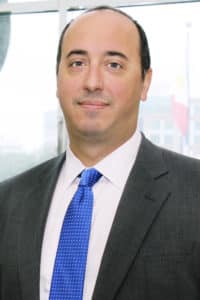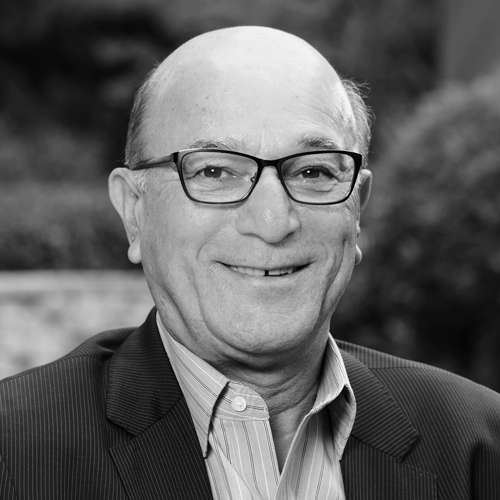A hospital tends to be divided into two spheres that overlap, yet at the same time remain disconnected at a fundamental level: there’s the physician/nurse side and then there’s the administrative side.
Obviously, a hospital wouldn’t be a hospital without its practitioners who treat patients. But at the same time, business decisions have to be made. And when you have administrators who haven’t been on the front lines, it can frustrate physicians who don’t feel their voices are being heard or their needs met.
At Shriners Hospitals for Children in Tampa, Florida, Richard Paula, who formerly worked as an emergency medicine physician and now serves as chief medical informatics officer, is bridging that gap.
Paula spent ten years in the hectic ER world as a physician at Tampa General Hospital before becoming a physician consultant, a medical director, and CMIO at Tampa General Hospital before taking the job as CMIO at Shriners, which accepts all patients regardless of their ability to pay. He says his experience treating patients has been invaluable in his current work.

“When I was a physician, I didn’t like hospital administrators,” he says. “I felt we had an adversarial relationship. I started to get frustrated, not about patient care, but the way the hospital was being run.”
From the vantage point he has now as an administrator, Paula says he clearly sees that physicians are good at one thing and administrators at another. This is one of the reasons they tend not to understand each other.
“Emergency medicine physicians are excellent primary order problem-solvers and poor secondary problem-solvers,” he says. “In a busy ER, physicians can solve anything. People come in with objects sticking out of their body, and they can solve that. But the secondary order is related to patient flow or efficiency, and that’s what administrators do.”
While still a doctor at Tampa General, Paula addressed his frustration by showing up at business meetings uninvited. But he soon discovered—to his surprise—that administration actually welcomed his presence there. He began attending more meetings, something none of his colleagues were doing. Soon, he became an assistant medical director and began his transition to the administrative side.
When asked to take the lead on an EM-specific medical records system, he became fascinated with the idea that he could design it in a way that could actually help physicians, whose greater efficiency would trickle down to the patients themselves. Based on his success on that project, the hospital—which had more than one thousand beds—hired him into the newly created CMIO position. He says he has realized during his tenure that one problem with hospital administration is that the wrong people are in those jobs.
“When you look for a physician executive, you want people who enjoy their job as a physician and aren’t just trying to escape to a desk,” he says. “You want to hire the ones who enjoy taking care of patients. That was me.”
In 2014, a recruiter called him about the position at Shriners. He was happy as CMIO at Tampa General, but the chance to lead a national-level hospital system with such a well-known brand was an offer he couldn’t resist. He dedicated himself to becoming a full-fledged administrator, with the chaos of the ER–which he often looks back on fondly—behind him. As a former physician who has now seen both worlds, Paula is convinced that having physicians in administration is key to the overall quality of a hospital.
When he sits in boardroom meetings, Paula says he sees himself as the voice of the physician in the room. He considers his responsibilities to be twofold: be responsible to the organization and to the medical staff. When budget decisions are being made, he’s thinking about both areas and how to harmonize them.
“When I’m working with the chief medical officer, my role is to focus on the technology and assist him with that,” he says. “But I’m always thinking, ‘Is this going to improve patient care and make them healthier?’ It doesn’t have to be the newest or most expensive equipment. When I talk to medical staff, I explain to them why certain decisions were made and why we had to make compromises.”
Shriners is working on several initiatives now to improve patient care through technology. It is using a new outcome measure that looks at functional outcomes. The first goal is to do the surgery correctly, but the hospital is now tracking what happens after the surgery by giving the patients iPads and having them record progress. They ask questions such as, can they do what they did before the surgery? Can they play sports? Can they dance? Can they open a doorknob?
“That helps guide our care,” he says. “The social domain—school, friends, sports—is more abstract than thinking about infections healing, but it’s just as important. With the surveys, we have a better handle on which surgeries are successful in the larger sense.”
The hospital is also trying to address physician burnout, which is common for various reasons—long hours, frustration with administration, not being able to help patients as much as they would like, and more. Paula’s team has found that streamlining the medical records system can take pressure and frustration away that could be the tipping point for a physician to burn out.
Paula hopes to see more physicians make the move to administration—physicians who deeply care for patients and have a humanistic view of the hospital’s mission. He studied literature in college and quotes everyone from Plato to Hemingway to poet William Carlos Williams, who was also a doctor. He feels that his liberal arts education was invaluable to his ability to care for patients in the ER, as well as to think about them working in administration.
“When I talk to friends who want to be doctors, I tell them my advice is to major in liberal arts,” he says. “A knowledge of the humanities is important. Your life should not just be about science. Science is quantitative, and literature and philosophy are underappreciated. We’re a rare breed, but I’m thankful for my background.”
Even though he’s settled into his position at Shriners, he says he’s had to come to terms with being in an office and sometimes looks back on his ER experience longingly.
“I don’t miss being in the ER on
Saturday and not having dinner and wine with my wife. But I do miss patient care,” Paula says. “Still, I feel that my impact at this level is so much bigger than what I could do as an individual physician.”
Photo: Courtesy of Shriners Hospitals for Children

